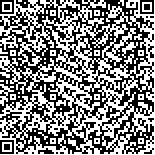吴建贤,江炎,洪永锋,等.踝关节持续被动运动治疗脑瘫足外翻的临床疗效[J].中华物理医学与康复杂志,2020,42(1):44-49
扫码阅读全文

|
| 踝关节持续被动运动治疗脑瘫足外翻的临床疗效 |
|
| |
| DOI:DOI:10.3760/cma.j.issn.0254-1424.2020.01.011 |
| 中文关键词: 持续被动运动 足外翻 脑性瘫痪 足底压力 |
| 英文关键词: Passive motion Talipes valgus Cerebral palsy Plantar pressure |
| 基金项目:安徽省教育厅高校自然科学基金重点项目(K12016A34);安徽省教育厅质量工程临床特色(康复医学)项目(tszy011);安徽医科大学第二附属医院三新项目(201245) |
|
| 摘要点击次数: 5578 |
| 全文下载次数: 6398 |
| 中文摘要: |
| 目的 观察踝关节持续被动运动(CPM)治疗脑瘫患儿足外翻的临床意义。 方法 共纳入36例脑瘫患儿,按随机数字表法分为对照组、无持续被动运动(NCPM)组和CPM组,每组12例(24只足)。NCPM组给予常规康复治疗及家庭康复治疗,CPM组在NCPM组的基础上增加CPM治疗,对照组暂只进行家庭康复治疗。1个月为1个疗程,CPM组及NCPM组前20日行院内综合康复治疗,所有的项目均为每日1次,后10日行家庭康复治疗,每日1次。分别于入组前、治疗2个月和4个月后,分别对3组患儿进行足底压力测量、GMFM-88项站立及走跑跳两项评估。 结果 ①组内比较:对照组治疗前后的各数值变化差异均无统计学意义(P>0.05);治疗4个月后,NCPM组和CPM组的MMF压力百分比与治疗前比较,差异均有统计学意义(P<0.05);2组患者的(ICP+FFCP)百分比、FFP百分比差异均有统计学意义(P<0.05);2组患儿的站立评分及走跑跳评分差异均有统计学意义(P<0.05)。②组间比较:治疗4个月后, NCPM组与CPM组MMF压力百分比与对照组比较,差异有统计学意义(P<0.05);2组(ICP+FFCP)百分比及FFP百分比组间差异均有统计学意义(P<0.05);2组患儿的站立评分及走跑跳评分组间差异均有统计学意义(P<0.05);与NCPM组相比,CPM组MMF压力百分比差异无统计学意义(P>0.05),FFP百分比差异有统计学意义(P<0.05),站立评分差异有统计学意义(P<0.05),走跑跳评分差异无统计学意义(P>0.05)。 结论 常规康复治疗结合踝关节CPM治疗脑瘫患儿足外翻疗效较单纯常规康复治疗疗效显著,踝关节CPM治疗可改善脑瘫患儿步行能力。 |
| 英文摘要: |
| Objective To observe the clinical utility of continuous passive movement (CPM) of the ankle joint in treating children with cerebral palsy and foot valgus. Methods Thirty-six children with cerebral palsy and foot valgus were divided into a control group, a non-continuous passive exercise (NCPM) group and a CPM group with 12 children (24 feet) in each group. The NCPM and CPM groups were given conventional rehabilitation treatment for the first 20 days and then home rehabilitation for a further 10 days. The CPM group additionally received CPM treatment during the first 20 days. The control group was only given home rehabilitation for 30 days. Each subject′s plantar pressures were measured along with GMFM-88 scores for “standing” and “walking, running and jumping” before the treatment and 2 and 4 months later. Results There was no significant difference in the average values of the output measures among the control group before and after the treatment. After four months, significantly better improvement was observed in the average percentages of medial forefoot (MMF) pressure among the NCPM group compared with the CPM group. There were also significant differences between the two groups in the [initial contact phase(ICP) + forefoot contact phase(FFCP)] and foot flat phase (FFP) percentages, as well as in the standing, running and jumping scores. Significant differences were also observed between the NCPM and CPM groups in terms of the average percentage of FFP pressure and their average standing scores, but not in the average percentage of MMF or the average jumping and running scores. Conclusions CPM usefully supplements conventional comprehensive rehabilitation therapy in improving the walking ability of children with cerebral palsy and talipes valgus. |
|
查看全文
查看/发表评论 下载PDF阅读器 |
| 关闭 |